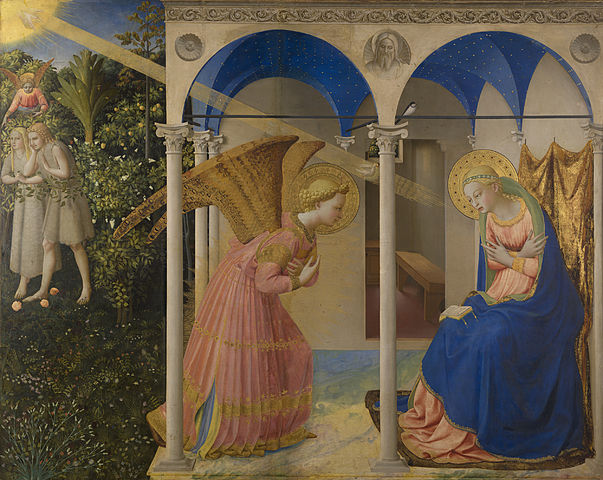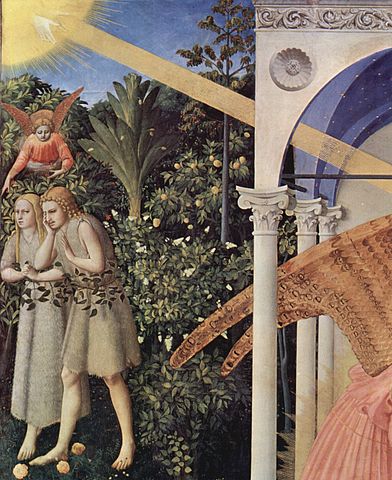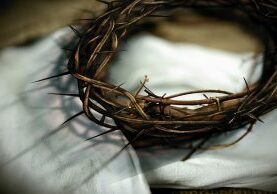Life, Death and the Annunciation
Guest
By Hannah Coyne
Several years ago, I escaped the heat of a sweltering July day in Madrid by wandering the galleries of the Prado Museum. Surrounded by Picassos and Monets, I was most captivated by one painting: Fra Angelico’s Annunciation. A few weeks ago, I fortuitously stumbled upon the copy of this painting that I bought, just in time for the Feast of the Annunciation.
This is the day we celebrate the day when Mary received the news from Gabriel that she was going to bear the Son of God. It feels odd to celebrate this day of good news and new life in this solemn Lenten season of repentance and death. But the date can’t be helped—nine months from now we will celebrate the birth of Jesus. In pondering this juxtaposition, I came to realize that Fra Angelico’s painting, along with today’s Collect, can help us hold these themes of life and death together in tension.
In the main part of the painting, we see Gabriel bending to tell Mary that she is indeed the “favored” one, the one imbued with grace. We can tell Mary is a pious woman, for she’s been interrupted doing her devotions, which she’s hastily set aside on her knee. In the top left of the painting, we see God’s hands sending down the Holy Spirit, represented by a golden beam of light and a dove. The shimmering beam heads straight for Mary’s heart, reminding me of Luke’s later observation that after the shepherds’ joyous visit to meet Jesus, the contemplative Mary “treasured up all these things and pondered them in her heart” (Luke 2:19).
In Collect for the Feast of the Annunciation, we pray to receive the same gift of grace at the heart level that Mary did on the day that Gabriel visited her:
Pour your grace into our hearts, O Lord, that we who have known the incarnation of your Son Jesus Christ, announced by an angel to the Virgin Mary, may by his cross and passion be brought to the glory of his resurrection; who lives and reigns with you, in the unity of the Holy Spirit, one God, now and for ever. Amen.
Here is where Fra Angelico’s painting is brilliant, for what do we do with the Collect’s seemingly joy-filled promise of grace right next to the mention of the cross? In the upper left hand corner of the painting, Fra Angelico makes an astute theological statement. He depicts a tearful and ashamed Adam and Eve being cast out of paradise by an equally sorrowful angel. Eve wrings her hands and Adam covers his face in shame. The garments God provided for the shame-filled couple are drab.
Contrast this dreariness with the rich colors Mary wears and her holy glow. Unlike Eve, who did not have full trust in God or his limitless goodness, Mary says ‘Yes’ to God’s will without reservation. “I am the Lord’s servant,” Mary says, “May it be to me as you have said.” (Luke 1:38) Perhaps Jesus heard his own mother’s voice ringing through his mind on the night before he died, as he prayed, “Not my will, but yours be done” (Luke 22:42).
The gift of this painting and the grace of celebrating the Annunciation today in the midst of Lent is this: in Jesus Christ, trust and full communion with God is possible again, because of Jesus’ arrival on the scene. The shame of being cast out of the Garden of Eden is dispelled. Jesus is a new and better Adam, by whose passion and cross we can receive God’s grace into our hearts. As Paul writes, “For as in Adam all die, so in Christ all will be made alive” (1 Cor. 15:22). The Prado’s description of this painting hits the nail on the head: the image simultaneously depicts “the damnation and salvation of Humanity.”
When we prepare for Holy Week’s arrival in a few days, let us take a moment to celebrate this feast day as it memorializes Christ’s incarnation for our very salvation.
Hannah Coyne is native of western Massachusetts and obtained her Master’s in Pastoral Theology from Regent College in Vancouver.












